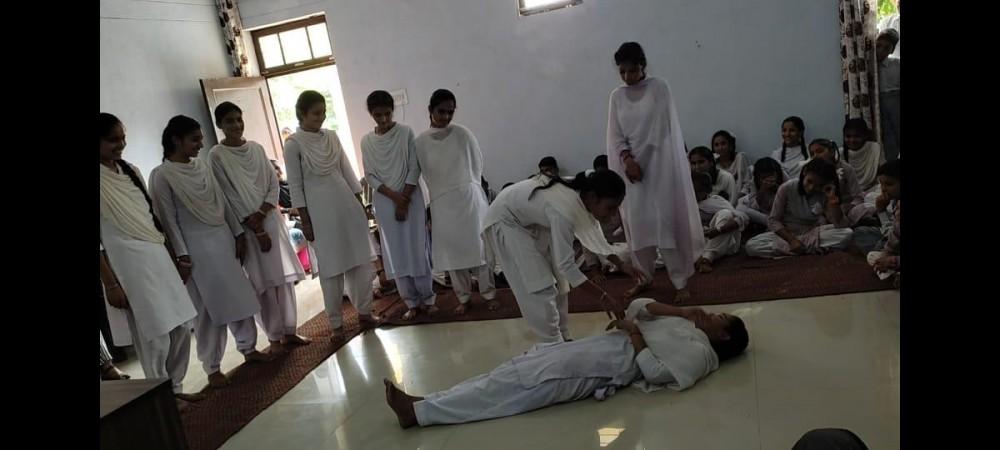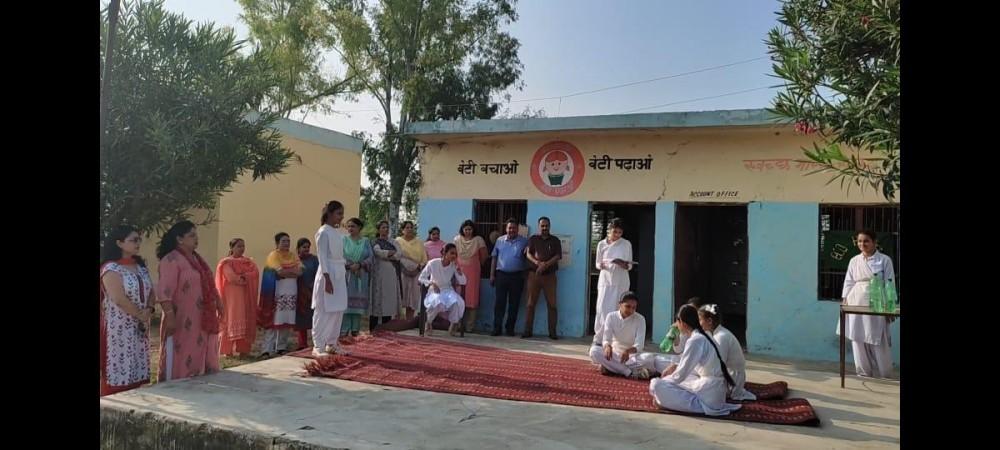Treva-the last Indian village on the International Border (IB) with Pakistan in Jammu and Kashmir's Arnia sector, wore a festive look as dwellers of this border village gathered in huge numbers in the premises of the local government higher secondary school to participate in the fourth edition of the "Back-to -Village" programme.
The fourth edition of the Back-to-Village programme is an action-packed deliverable-oriented programme with a focus on youth, skills and self-employment, good governance, and Panchayati Raj, Nasha Mukt, Rozgar Yukt J&K.
Today on the third day of this programme main focus was on "Nasha Mukti" so students of the government higher secondary school Treva present a street play to educate villagers against the menace of drug addiction.

The border dwellers were over-enthusiastic to attend this programme because the aim of this programme to address the grievances of villagers at their doorsteps.
The denizens of this border village were enthusiastically participated in programmes and expressed their views and feedback on the work done by the various departments.
The Sarpanch of this border Balbir Kour educated the villagers about the importance of the revolutionary outreach initiative taken by the Union Territory administration to reach out at the grassroots before formulating planning and developmental plans.

Over 25,000 government employees developed at the Panchayat level to address peoples' grievances
The fourth edition of this programme, which began on October 27, 2022, will continue till November 3. This was preceded by a Jan Abhiyan- a preparatory programme- organized from October 15-26, 2022.
The Jan Abhiyan was by the Administrative Secretaries in respect of their departments and each department chose a set of deliverables for saturation.
Over 25,000 government employees at all levels will participate including 4,500 gazetted officers who will directly be deployed to the Panchayats.

Notable during this programme officers have to halt during the night in the respective Panchayats allocated to them as per the schedule of the programme.
The Deputy Commissioners (DCs) of all the 20 districts of the Union Territory of Jammu and Kashmir have to lead the initiative while the Rural Development Department is the nodal department- responsible for the conduct of the programme and submitting a detailed report at the end of the programme.
Lieutenant Governor Manoj Sinha has directed all departments and DCs to ensure saturation of all deliverables and ensure that all targets are met.

The current Back-to-Village programme is action and deliverable-based and the success of the programme lies in the achievement of deliverables.
Targets set for Back-to-Village programme
- 15 cases of self-employment per Panchayat and a selection of 20 candidates per panchayat for skill training are highlights of this year's programme.
- The focus areas shall be Youth, skills and self-employment, Good Governance, and Panchayati Raj, Nasha Mukt, Rozgar Yukt J&K
- The target is over 15 lakh rural citizens expected to participate in the programme.
- At least 2 lakh certificates of various kinds are to be issued o 65,000 self-employment cases to be taken up by the govt and the banks.
- Over 1,00,000 youth to be identified for skill training.
- 1,000 awareness camps of various kinds to be organized.
- 1,00,000 Ayushman Bharat Golden Cards to be issued.
- Agricultural Universities to hold 200 extension camps during this period.
- J&K bank to partner with the administration in delivering credit-linked schemes.
- IT-based Common Service Centres (CSCs) to set up 4,000 stalls and hold demonstrations and training to help citizens access 225 online services including 70 G2C services.
- 4200 Pani samitis to meet and deliberate on adequate and safe drinking water.
- Over 10 lakh land passbooks to be issued to eligible farmers o 7,000 long pending inheritance mutations to be attested during the period
- At least one playfield in every Panchayat and one game to be played in every playfield.
- Special camps to provide support to specially-abled.
Quality of delivery of public services and the bottlenecks in the field to be assessed e.g. time taken for sanctioning of various schemes, availability of village officials such as patwari and VLW, quality of executed works etc. etc.
To find out the real bottlenecks in the field- how much time does it take for a pension case to be sanctioned; how frequently does a patwari visit the village, how many people have applied for PMAY house but have not yet got one, how many MNREGA works are of poor quality etc.
Awards shall be given to best-performing districts as well as officers on the occasion of Republic Day for performance in Jan Abhiyan and the fourth edition of the "Back-to-Village".









